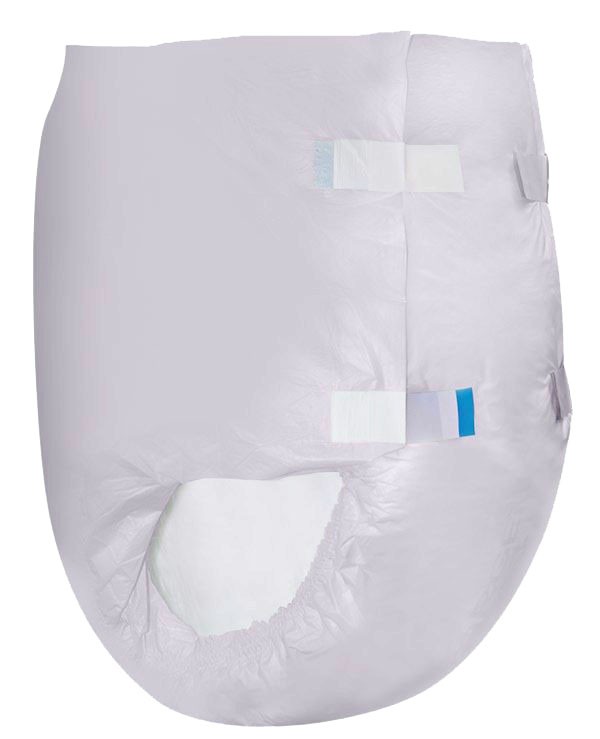
Almost everyone can develop diaper rash, a type of contact dermatitis. This is due to the skin coming into contact with a wet or dirty diaper for a prolonged period and other causes which are listed below.
- What Causes Rashes
- Irritation by urine or stool – this happens because the two waste products are acidic and moist. It gets worse if they remain in contact with the skin for too long.
- Consumption of new products, especially food – the body reacts to new foods by releasing acidic urine and other wastes. As the body reacts with the new product, it leaves the skin vulnerable to rashes.
- Sensitive skin – when skin is sensitive it reacts with many of the items that it is exposed to. It gets worse if you are prone to allergies. Sensitive skins are also known to react with new products.
- Tight diaper – rashes thrive in places that have a lot of moisture and little space. A tight diaper means that there is no free circulation of air. Beyond thinking about the rashes, you should consider the comfort of the wearer when tightening a diaper.
- Intake of antibiotics by the mother or baby – medication changes chemical and hormonal balances for both children and their mothers. A nursing mother should also watch-out whenever she is taking any antibiotics.
- Do Not Make the Rash Worse
Beyond the factors that cause rashes, there are others factors that can make rashes worse. Rashes are likely to worsen when one wears a soiled diaper for too long. Diapers should be changed on a regular basis or as soon as they are soiled. When a diaper rubs against the skin, it can cause chaffing and rashes. If the wearer has a yeast infection, there is a likelihood of the rash worsening. A bacterial infection is also another reason you are likely to experience a rash. Some people are allergic to certain materials that are used in the manufacturing of diapers.
- Check the Factors Making them Worse
Rashes are also common in children because of other factors. These range from medical ones to environmental. For instance, rashes are prevalent between the ages of 9 and 12 months. If a child or adult sleeps in a sloppy diaper, the chances of developing rashes are very high. It is also easy to experience rashes if you have diarrhea, because stool is liquid and acidic. The possibility of rashes increases when toddlers begin to consume solid foods. Consumption of medication, especially antibiotics also increase the chances of rashes.
- Keep it Clean and Dry
Wet and soiled diapers will always cause rashes. Diapers should be changed as soon as they are soiled. Further, the wearer should spend a few minutes every day without a diaper. The idea is to give the skin time to breathe. The skin should be allowed a few minutes to breathe before a new diaper is put on.
- Mind How You Put It On
The process of wearing a diaper could also contribute to rashes. You should wash your hands thoroughly before changing a diaper to avoid spreading bacteria or other organisms that could escalate a rash. Clean the area gently with water and pat dry instead of rubbing it. Wipes with alcohol are likely to escalate a rash and thus should be avoided. In fact, it is advisable that you avoid using diapers with extreme fragrances. When you wear or wrap the diaper, you need to make sure that it is not too tight.
- Watch-Out When the Rash Develops
Be extra careful when there is a rash because the steps you take will determine whether the rashes will disappear or increase. Increase the frequency of changing diapers when rashes develop. This denies the rashes an opportunity to escalate because the conditions will be dry and clean. Clean the affected area thoroughly with soap. However, avoid using soaps that have a lot of additives in it.
- Use Disposable Diapers
Use disposable diapers instead of washable ones. Disposable diapers come with ultra-absorbent properties. In fact, present day technology has made diapers extra absorbent. This makes them drier than reusable diapers. The other challenge with reusable diapers is that the process of washing them will easily damage its absorbency. This means that with every wash, you will be losing the ability to absorb as much urine, exposing the wearer to wetness.
- Use creams and jellies
Use creams and jellies to protect the skin from rashes. They provide a barrier that keeps away irritants like urine and stool. Apply these creams and jellies gently and in small quantities to ensure that the diaper does not stick to the skin. Avoid a lot of additives and fragrances when choosing creams and jellies. Using a lot of jelly is likely to make it difficult to peel a diaper off the body when it needs removing.
Avoid certain treatments when you experience rashes. You should also avoid dryer sheets and fabric softeners, as well as other highly fragranced products. When products are less allergenic, they do not cause a lot of irritation. Avoid using powders on a rash. They are the worse because users can inhale them, causing more health complications.
There are instances where medical attention is required. This is especially common when health problem escalate. However, do not rush the person to the doctor because of a mild rash. You should only be alarmed when the rash develops into blisters, or the person has a fever, or the rash begin to redden and pus or any discharge is experienced. If it fails to go away despite treatment, you have a reason to see the doctor. Do not use medical prescription products given for other skin conditions because they might not be effective. You need to monitor the skin on a regular basis to ensure that a rash does not escalate.